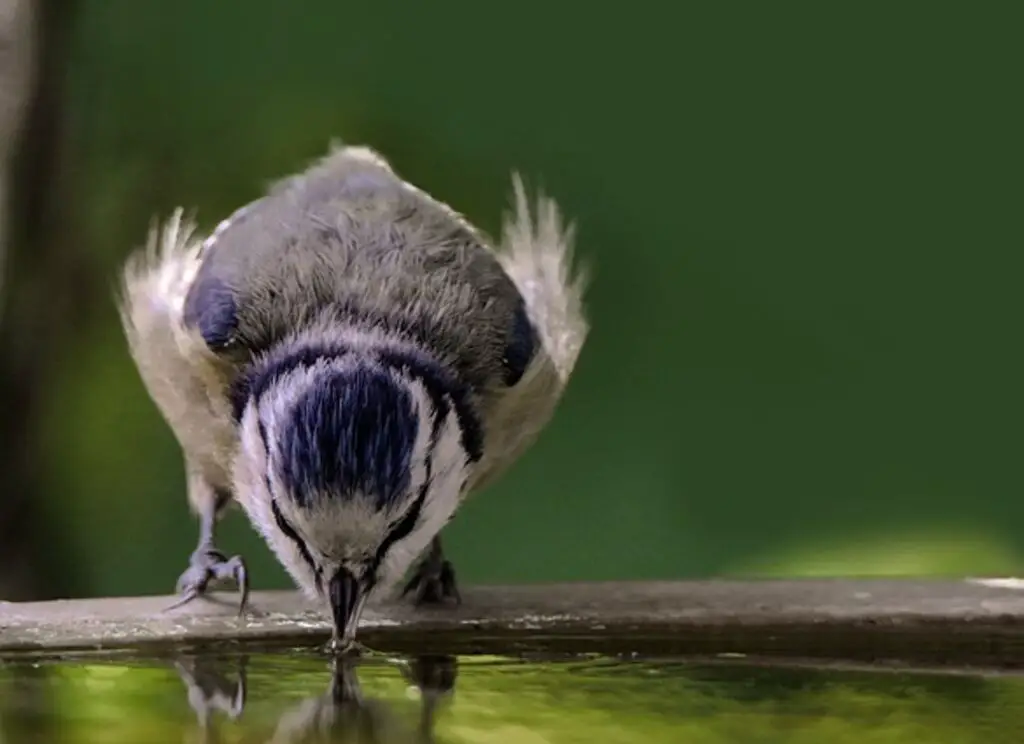Water is essential for all living organisms, including birds. It plays a critical role in their survival, and without it, they wouldn’t be able to survive for very long. Birds require water to keep their bodies functioning properly, regulate their body temperature, and maintain their overall health.
As such, water is a fundamental part of a bird’s daily routine, and they spend a considerable amount of time drinking and bathing.In this article, we will delve into the topic of when birds start drinking water.
We’ll explore why water is so important for birds, when and how often they drink water, and how their drinking habits can vary depending on the species, the environment, and other factors.
Table of Contents
- 1 When Do Birds Start Drinking Water?
- 2 Nestling Birds
- 3 Juvenile and Adult Birds
- 4 Drinking Behaviors
- 5 Adaptations to Water Sources and Environments
- 6 Environmental Factors
- 7 Conservation and Management Implications
- 8 Frequently Asked Questions
- 8.1 What is the best water for birds?
- 8.2 How often do budgies drink water?
- 8.3 Can I put water in a bowl for birds?
- 8.4 Should I spray my bird with water?
- 8.5 Where is the best place for water for birds?
- 8.6 Can I sprinkle water on my budgies?
- 8.7 Is it OK to spray budgies with water?
- 8.8 How do you introduce a budgie to water?
- 8.9 What time of day should I feed my bird?
- 8.10 Do birds need water at the feeders?
- 8.11 Can I put ice in my bird’s water?
- 8.12 How often should you change water in a bird bath?
- 8.13 What is the purpose of a bird bath?
- 8.14 How do you move water in a bird bath?
- 8.15 How do baby birds get water?
- 8.16 Do birds drink water at night?
- 8.17 How often do birds drink water?
- 8.18 Where do birds drink water?
- 8.19 How to attract birds to drink water?
- 8.20 How do birds drink water?
- 8.21 How do birds find water to drink?
- 9 Conclusion
- 10 Author
When Do Birds Start Drinking Water?
Baby birds typically start drinking water when they are around 1-2 weeks old. Before that, they obtain all the hydration they need from their diet, which may be in the form of regurgitated food from their parents.
As they get older, they begin to explore their surroundings and may start pecking at water sources, such as shallow puddles or bowls of water. It’s important to provide clean and fresh water for baby birds, especially if they are being raised in captivity.
Baby birds start drinking water at different ages, depending on their species and development. Here are some details on when they may start drinking water and how to provide it:
| Bird Species | Age when parents provide water | Age when birds start drinking on their own |
|---|---|---|
| American Robin | 4-6 days | 14-16 days |
| Barn Swallow | 5-7 days | 14-16 days |
| Blue Jay | 8-12 days | 18-21 days |
| House Sparrow | 3-5 days | 7-10 days |
| Mourning Dove | 5-10 days | 12-14 days |
| Northern Cardinal | 3-5 days | 7-10 days |
| Song Sparrow | 5-7 days | 14-16 days |
| Tree Swallow | 5-7 days | 14-16 days |
This table provides information on when baby birds from different species start drinking water from their parents and when they start drinking on their own.
Drinking Water for Baby Birds
As baby birds grow and start to eat solid food, they may also start to drink water. It’s essential to provide clean, fresh water for baby birds once they start to drink it.
Timing for Different Species
For some species, such as chickens or ducks, baby birds start drinking water within a few days of hatching. However, for other species, such as songbirds or raptors, it may take a few weeks before they start drinking water independently.
Providing Water for Baby Birds
For domesticated birds, such as chickens or ducks, a shallow water dish can be provided at a low height to allow easy access for the chicks. For wild birds, it’s best to provide a shallow dish or saucer with fresh water in a secure location, away from predators and other hazards.
Assisting Baby Birds with Drinking
In some cases, baby birds may need assistance in drinking water, especially if they are weak or dehydrated. In such cases, a specialized rehydration solution, such as Pedialyte, can be mixed with water and offered to the bird using a dropper or syringe.
Caution with Supplements
It’s important to note that baby birds should not be given water with added supplements, such as electrolytes or vitamins, unless recommended by a veterinarian. These supplements can be harmful to the bird if not given in the proper dosage or if the bird doesn’t need them.
In summary, baby birds start drinking water at different ages, and it’s crucial to provide them with clean, fresh water once they start to drink it. Additional assistance may be required for weak or dehydrated birds, but caution should be taken when adding supplements to their water.

Nestling Birds
Nestling birds are adorable little creatures, but have you ever wondered how they get their water? It’s not like they can fly to a nearby stream and take a sip. Here’s a closer look at how nestling birds get the hydration they need.
Obtaining Water
Nestling birds get their water from a variety of sources, depending on their environment. In the wild, nestling birds often obtain water from their food, such as insects and fruits.
Some bird species, such as pigeons and doves, also produce “crop milk” which is a nutritious fluid produced in their crop and fed to their young. In captivity, nestling birds can be given water through a syringe or dropper, or provided with a shallow dish of water.
Parental Role in Providing Water
The role of parents in providing water to nestling birds varies depending on the species. In some bird species, such as ducks and geese, parents will lead their young to water sources and show them how to drink.
Other species, such as pigeons and doves, will regurgitate crop milk to their young, which provides both nutrition and hydration. In some cases, parents will also bring water directly to the nest in their beaks.
Factors Affecting Water Intake
The water intake of nestling birds can be affected by various factors, such as environmental conditions and food availability. For example, during a drought, water sources may become scarce, which can make it challenging for parents to provide enough water to their young. Similarly, if food sources are limited, nestling birds may not get enough water from their food, which can lead to dehydration.
Overall, while nestling birds may not have access to water sources in the same way as adult birds, they still manage to get the hydration they need through various means. Parental care and environmental factors also play an important role in ensuring nestling birds receive enough water to thrive.
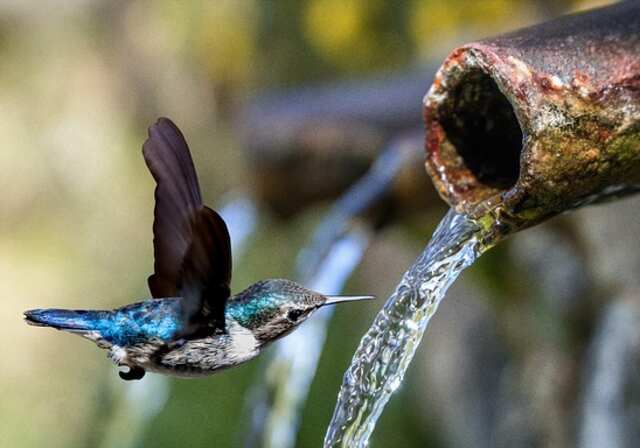
Juvenile and Adult Birds
Juvenile and Adult Birds
When it comes to drinking water, there are some differences in behavior between juvenile and adult birds. Juvenile birds need to drink water more frequently than adults, as they have a higher metabolic rate and require more hydration.
Drinking Behavior in Adult Birds
Adult birds typically drink water several times a day, depending on their species, habitat, and other factors. Some species, such as desert birds, have adapted to survive with less water and may only need to drink every few days. Other species, such as waterfowl, have a higher water intake due to their aquatic lifestyle.
Frequency of Drinking in Adult Birds
The frequency of drinking in adult birds can vary depending on the environmental conditions. For example, during hot weather or drought, birds may need to drink more frequently to stay hydrated. In general, most adult birds drink water at least once a day, with some species drinking up to 10% of their body weight in water per day.
Drinking Habits of Migratory and Non-Migratory Birds
Migratory birds have different drinking habits compared to non-migratory birds. During migration, many species of birds rely on water sources along their route to replenish their energy and stay hydrated. Non-migratory birds, on the other hand, have a more stable water supply and may have more predictable drinking habits. However, some non-migratory birds, such as those living in arid regions, may still have to adapt to limited water sources and drink more frequently.
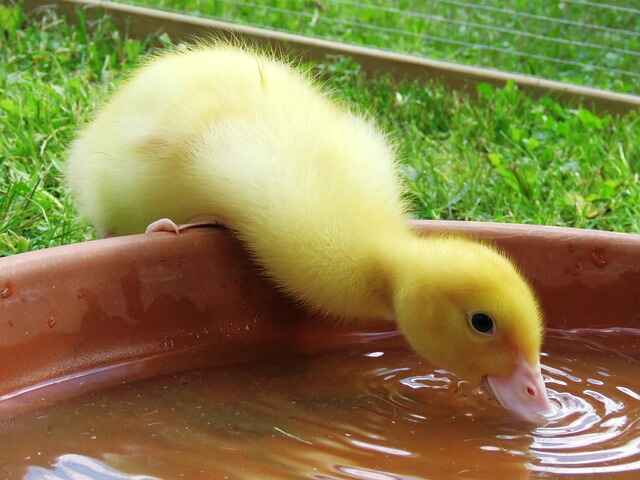
Drinking Behaviors
Birds have developed various drinking behaviors to obtain water in their habitats. The type and availability of water sources, as well as the bird’s physiology, can influence the bird’s drinking behavior.
Standing Water Sources
Birds that live near standing water sources, such as lakes, ponds, or rivers, may drink directly from the water. Some birds, such as ducks and geese, have adapted to filter the water with specialized structures in their bills to remove impurities before drinking.
Flowing Water Sources
Birds that live near flowing water sources, such as streams or rivers, may drink by dipping their bills into the water while standing on a rock or a branch. Some birds, such as kingfishers, have adapted to dive into the water to catch fish or other prey and drink while submerged.
Rainwater
Birds that live in areas with regular rainfall may drink directly from rainwater or collect it in natural depressions or plant structures, such as bromeliads. Some species, such as the Australian gray-crowned babbler, even use their wings to “funnel” rainwater into their beaks.
Dew and Moisture
Birds that live in arid areas may obtain water from dew or moisture. Some species, such as the sandgrouse, have specialized feathers that can absorb water and transport it to their chicks, while others, such as the Namaqua dove, drink dew drops from leaves or stones.
Nectar
Birds that feed on nectar, such as hummingbirds or sunbirds, obtain most of their water from the nectar itself. However, they may also drink from other sources, such as rainwater or dew.
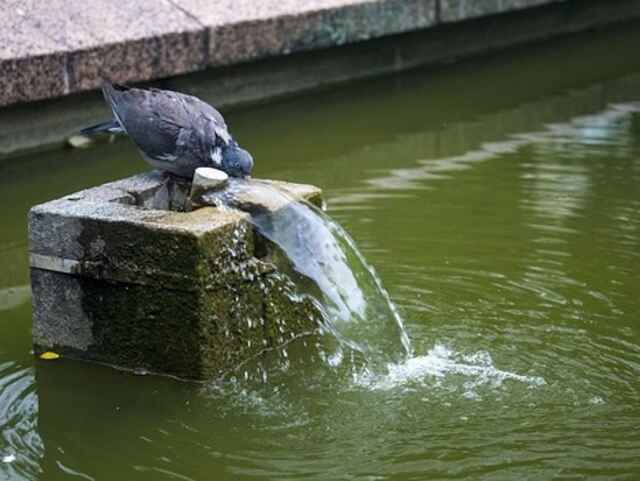
Adaptations to Water Sources and Environments
Birds have evolved various adaptations to their habitats and water sources to obtain water efficiently.
Desert Adaptations
Birds that live in arid areas, such as deserts, have evolved to reduce their water loss. They may have specialized kidneys that can produce highly concentrated urine or excrete uric acid, which requires less water than other nitrogenous wastes. They may also have efficient respiratory systems that minimize water loss through breathing.
Wetland Adaptations
Birds that live in wetlands, such as swamps or marshes, have evolved to navigate and feed in water. They may have webbed feet or specialized claws that help them grip slippery surfaces. They may also have long bills or necks that allow them to reach prey underwater.
Saltwater Adaptations
Birds that live in saltwater environments, such as coastal areas or estuaries, have evolved to deal with high salt concentrations. They may have specialized glands in their bills or eyes that can excrete excess salt, or they may have developed a salt gland above their eyes that excretes salt through the nostrils.
Overall, birds have developed a range of drinking behaviors and adaptations to obtain water efficiently in their habitats. These adaptations have enabled them to survive and thrive in various environments, from arid deserts to coastal estuaries.

Environmental Factors
Environmental factors play a crucial role in determining the drinking habits of birds. Birds need water to survive, and the availability of water can be affected by various factors such as temperature, humidity, and rainfall. In this article, we will discuss the influence of environmental factors on bird drinking habits, with a focus on temperature, humidity, and rainfall.
Temperature
Temperature is one of the most important environmental factors that affect bird water intake. Birds need to maintain their body temperature within a narrow range, and water plays a crucial role in regulating their body temperature. In hot weather, birds tend to drink more water to stay cool, while in cold weather, they may drink less water to conserve body heat.
Research has shown that birds tend to drink more water when the temperature is above 25°C (77°F) and less water when the temperature is below 10°C (50°F). The exact amount of water intake also depends on the species of bird, its size, and its metabolic rate.
Humidity
Humidity is another environmental factor that affects bird water intake. Humidity refers to the amount of moisture in the air, and it can affect the rate at which water evaporates from a bird’s body. In dry environments, water evaporates quickly, which can cause dehydration in birds.
In high humidity environments, water evaporates slowly, which can reduce the need for birds to drink water. However, in humid environments, the air can also be saturated with moisture, which can make it difficult for birds to lose heat through evaporative cooling. This can cause birds to drink more water to regulate their body temperature.
Rainfall
Rainfall is another environmental factor that affects bird water intake. Rainfall can provide birds with a direct source of water, and it can also increase the availability of water in the environment. Birds may drink less water during rainy periods, as they can obtain water from other sources such as puddles or streams.
However, heavy rainfall can also make it difficult for birds to find water, as it can wash away sources of standing water. In arid regions, rainfall can be critical for bird survival, as it can provide the only source of water in the environment.
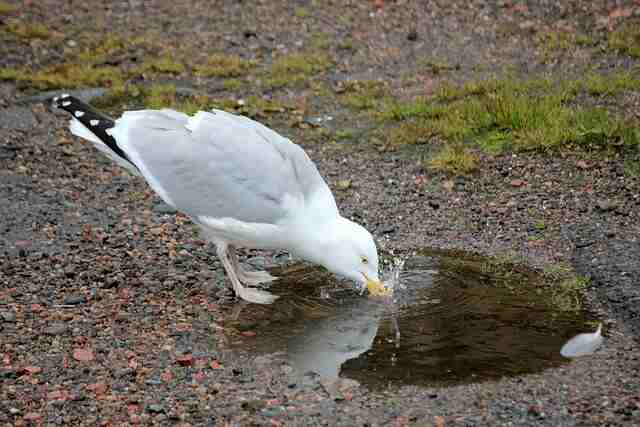
Conservation and Management Implications
Urban and suburban areas can be challenging environments for birds to thrive in due to the lack of natural resources, including water sources. Providing water sources for birds is an important conservation and management practice that can help support healthy bird populations in these areas.
Importance of Providing Water for Birds in Urban/Suburban Areas
Water is a critical resource for birds, as they require it for drinking, bathing, and thermoregulation. In urban and suburban areas, birds often have limited access to natural sources of water, such as streams, ponds, and wetlands, due to habitat destruction and fragmentation, and water pollution.
As a result, birds may suffer from dehydration, heat stress, and poor feather condition, which can reduce their survival and reproductive success. Providing water sources for birds in urban and suburban areas can help mitigate these negative impacts and support healthy bird populations.
Bird watering stations, such as bird baths and water fountains, can provide birds with a reliable source of clean and fresh water, which they can use for drinking and bathing. These watering stations can also serve as a social gathering spot for birds, which can increase their interactions and promote community building.
Bird Watering Stations and Conservation
Bird watering stations can also have important conservation implications, as they can help support the conservation of local bird populations. By providing water sources for birds, bird watering stations can help create a more hospitable environment for birds, which can encourage them to stay in the area and increase their breeding success.
Additionally, bird watering stations can help attract a variety of bird species, including those that may be less common in urban and suburban areas, which can promote biodiversity and ecosystem health. To maximize the conservation benefits of bird watering stations, it is important to select the appropriate location and design.
Bird watering stations should be located in areas that are easily accessible to birds, such as near trees or shrubs where birds can perch and observe their surroundings. The design of the watering station should also take into consideration the needs of the local bird species, such as providing shallow water for small birds and deeper water for larger birds.
Conservation and Management Implications
In conclusion, providing water sources for birds in urban and suburban areas is an important conservation and management practice that can benefit both birds and humans. Bird watering stations can provide birds with a reliable source of clean and fresh water, which they can use for drinking and bathing, and promote community building among bird species.
Additionally, bird watering stations can have important conservation implications, as they can help support the conservation of local bird populations and promote biodiversity and ecosystem health. As such, bird watering stations should be considered as a valuable tool for managing and conserving urban and suburban bird populations.
Frequently Asked Questions
What is the best water for birds?
The best water for birds is clean, fresh, and free of contaminants such as chlorine, fluoride, and heavy metals. Birds are sensitive to impurities in water, so it is best to avoid using tap water and instead provide them with filtered or bottled water.
How often do budgies drink water?
Budgies drink water frequently throughout the day, especially when they are fed a dry diet. It is important to provide them with fresh water daily and monitor their water intake to ensure they are staying hydrated.
Can I put water in a bowl for birds?
It is possible to provide water for birds by placing it in a bowl. However, it is important to ensure the bowl is cleaned and refilled with fresh water daily to prevent the growth of bacteria and other contaminants.
Should I spray my bird with water?
It depends on the bird species and their individual preferences. Some birds, such as parrots, enjoy being misted with water, while others may find it stressful. It is important to observe your bird’s behavior and body language to determine if they enjoy being sprayed with water.
Where is the best place for water for birds?
The best place for water for birds is in a shaded and sheltered area, such as under a tree or awning. This will protect the water from sunlight and prevent it from becoming too hot or evaporating too quickly.
Can I sprinkle water on my budgies?
Yes, you can sprinkle water on your budgies as long as they enjoy it and it does not cause them stress. You can use a misting bottle or a shallow dish of water to sprinkle on them gently.
Is it OK to spray budgies with water?
Yes, it is generally okay to spray budgies with water as long as they are comfortable with it. However, it is important to avoid getting water in their eyes or ears, as this can cause irritation and infection.
How do you introduce a budgie to water?
You can introduce a budgie to water by providing a shallow dish of water and allowing them to explore it at their own pace. You can also mist them with a spray bottle of water to see if they enjoy it.
What time of day should I feed my bird?
Birds can be fed at any time of day, but it is important to establish a consistent feeding schedule to ensure they are receiving the appropriate amount of food and nutrition.
Do birds need water at the feeders?
Yes, birds need water at the feeders, especially during hot and dry weather. Providing a source of clean water near the bird feeders can help attract and support healthy bird populations.
Can I put ice in my bird’s water?
Yes, you can put ice in your bird’s water during hot weather to help keep it cool and refreshing. However, it is important to monitor the water temperature and avoid using excessively cold water.
How often should you change water in a bird bath?
You should change the water in a bird bath every day or every other day to prevent the growth of bacteria and other contaminants. It is important to clean the bird bath regularly to maintain water quality.
What is the purpose of a bird bath?
The purpose of a bird bath is to provide birds with a source of clean water for drinking and bathing. Bird baths can also help attract a variety of bird species to your yard and promote biodiversity and ecosystem health.
How do you move water in a bird bath?
You can move water in a bird bath by using a fountain or bubbler to circulate the water and create movement. This can help attract birds to the bird bath and make it more appealing for drinking and bathing.
How do baby birds get water?
Baby birds typically get water from the food they consume, such as insects, worms, and fruits, which contain some water content. Some bird species, such as pigeons, doves, and flamingos, produce a special milk-like substance called crop milk that provides water and nutrients to their young.
Do birds drink water at night?
Most birds do not drink water at night, as they are typically roosting or sleeping during that time. They will usually drink water during the day when they are active and foraging for food.
How often do birds drink water?
The frequency of how often birds drink water can vary depending on factors such as temperature, humidity, and food availability. Generally, birds will drink water several times a day to stay hydrated, but some species may require more water than others.
Where do birds drink water?
Birds can drink water from various sources, including natural sources such as streams, ponds, and rivers, as well as human-made sources such as bird baths, fountains, and puddles. It is important to provide clean and fresh water sources for birds to help promote their health and well-being.
How to attract birds to drink water?
To attract birds to drink water, it is important to provide a reliable source of clean and fresh water, such as a bird bath or water fountain. Placing the water source in a visible and accessible location, such as near trees or shrubs, can also help attract birds.
How do birds drink water?
Birds drink water by using their beaks to scoop or dip into the water source and then tipping their heads back to swallow the water. Some birds, such as pigeons, can also suck up water like a straw.
How do birds find water to drink?
Birds find water to drink through a combination of visual cues and their sense of smell. They may also use their memory to remember where reliable water sources are located. Some bird species, such as migratory birds, may use landmarks and environmental cues to find water sources along their migration routes.
Conclusion
In conclusion, birds start drinking water shortly after hatching, and it is an essential part of their daily routine to stay hydrated and healthy. Providing a reliable source of clean and fresh water is crucial for promoting healthy bird populations and supporting their overall well-being.
By understanding when and how birds drink water, we can take steps to attract birds to our backyards and help contribute to their conservation and management.
Related Post: How Long Can A Bird Go Without Water? The Thirsty Bird!

